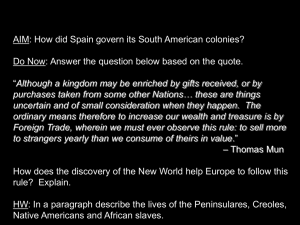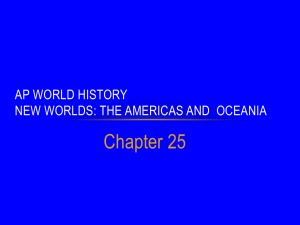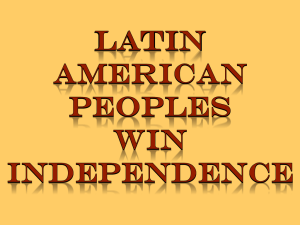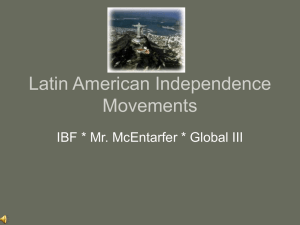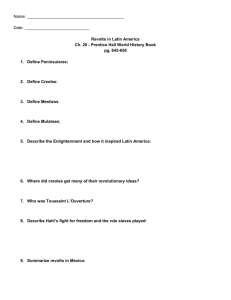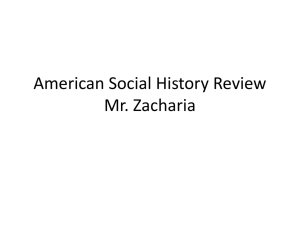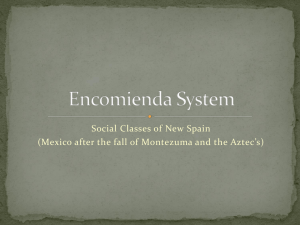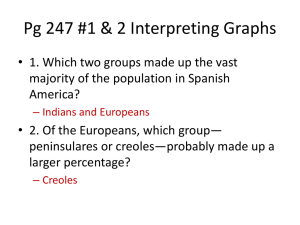Spanish Social Classes
advertisement
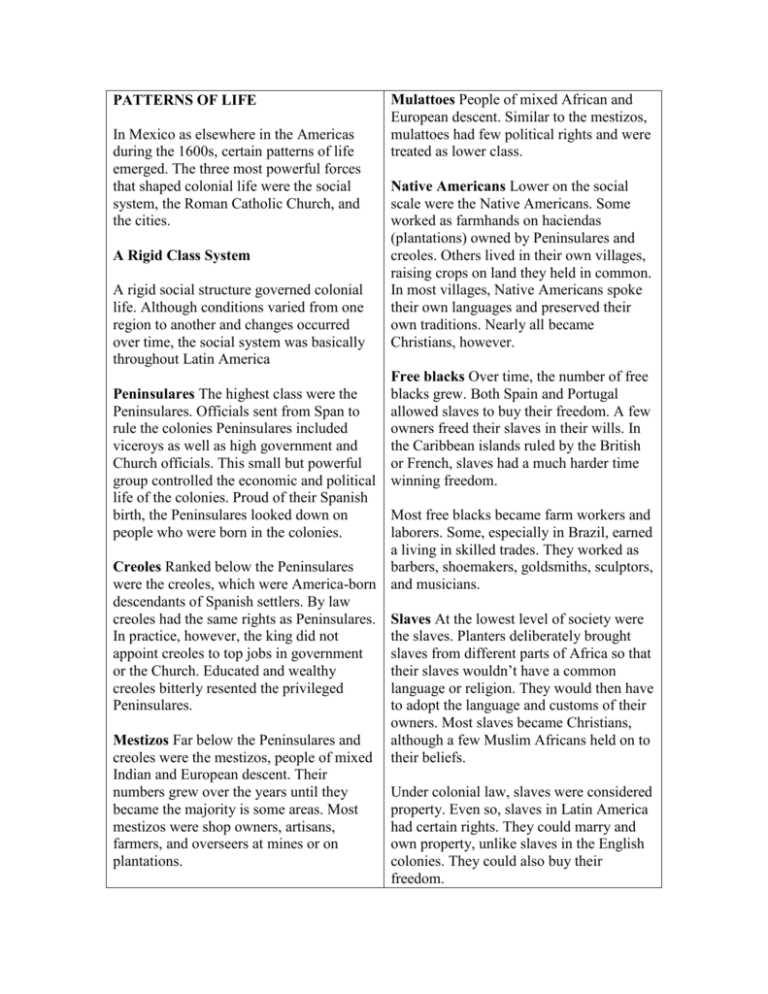
PATTERNS OF LIFE In Mexico as elsewhere in the Americas during the 1600s, certain patterns of life emerged. The three most powerful forces that shaped colonial life were the social system, the Roman Catholic Church, and the cities. A Rigid Class System A rigid social structure governed colonial life. Although conditions varied from one region to another and changes occurred over time, the social system was basically throughout Latin America Peninsulares The highest class were the Peninsulares. Officials sent from Span to rule the colonies Peninsulares included viceroys as well as high government and Church officials. This small but powerful group controlled the economic and political life of the colonies. Proud of their Spanish birth, the Peninsulares looked down on people who were born in the colonies. Mulattoes People of mixed African and European descent. Similar to the mestizos, mulattoes had few political rights and were treated as lower class. Native Americans Lower on the social scale were the Native Americans. Some worked as farmhands on haciendas (plantations) owned by Peninsulares and creoles. Others lived in their own villages, raising crops on land they held in common. In most villages, Native Americans spoke their own languages and preserved their own traditions. Nearly all became Christians, however. Free blacks Over time, the number of free blacks grew. Both Spain and Portugal allowed slaves to buy their freedom. A few owners freed their slaves in their wills. In the Caribbean islands ruled by the British or French, slaves had a much harder time winning freedom. Most free blacks became farm workers and laborers. Some, especially in Brazil, earned a living in skilled trades. They worked as Creoles Ranked below the Peninsulares barbers, shoemakers, goldsmiths, sculptors, were the creoles, which were America-born and musicians. descendants of Spanish settlers. By law creoles had the same rights as Peninsulares. Slaves At the lowest level of society were In practice, however, the king did not the slaves. Planters deliberately brought appoint creoles to top jobs in government slaves from different parts of Africa so that or the Church. Educated and wealthy their slaves wouldn’t have a common creoles bitterly resented the privileged language or religion. They would then have Peninsulares. to adopt the language and customs of their owners. Most slaves became Christians, Mestizos Far below the Peninsulares and although a few Muslim Africans held on to creoles were the mestizos, people of mixed their beliefs. Indian and European descent. Their numbers grew over the years until they Under colonial law, slaves were considered became the majority is some areas. Most property. Even so, slaves in Latin America mestizos were shop owners, artisans, had certain rights. They could marry and farmers, and overseers at mines or on own property, unlike slaves in the English plantations. colonies. They could also buy their freedom.
